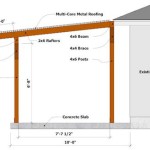Small Patio Trees For Arizona: Bringing Shade and Beauty to Limited Spaces
Arizona's climate presents unique challenges and opportunities for gardening. Scorching summers, intense sunlight, and periods of drought necessitate careful plant selection, especially when choosing trees for smaller spaces like patios. Selecting the right small tree can transform a patio into a shaded oasis, adding visual appeal and increasing property value. However, not all trees are suited to the harsh Arizona environment or the restricted root space of a patio container. This article explores several excellent small tree options that thrive in Arizona's climate and are manageable in patio settings, focusing on their specific needs, benefits, and potential drawbacks.
When considering a tree for a patio in Arizona, several factors are crucial. The tree's mature size is paramount; it must remain relatively small to avoid overcrowding the patio and becoming unwieldy. Drought tolerance is essential given Arizona's arid climate and the potential for water restrictions. Sun exposure is another critical factor; select a tree that can withstand the intense Arizona sun without scorching. Finally, consider the tree's root system. Container-grown trees have limited space for root growth, so choose varieties with less aggressive root systems that won't quickly become root-bound.
Dwarf Citrus Trees: Fragrance and Fruit in a Compact Form
Dwarf citrus trees are consistently a popular choice for patios, offering both aesthetic appeal and the bonus of fresh fruit. These trees are specifically bred to remain smaller than their full-sized counterparts, making them ideal for containers. Varieties such as dwarf lemons (Meyer lemon), limes (Key lime), oranges (Valencia or Navel), and grapefruits (Rio Red) all thrive in Arizona's climate, provided they receive proper care. Dwarf citrus trees require at least six hours of direct sunlight daily, well-draining soil, and regular watering, especially during the hot summer months. It’s important to protect them from frost during winter evenings, sometimes requiring them to be brought indoors if a hard freeze is anticipated.
The fragrant blossoms of citrus trees are a significant draw, filling the patio with a sweet, refreshing scent. The fruit provides a source of fresh ingredients for cooking and beverages. However, dwarf citrus trees do require some maintenance. Regular pruning is necessary to maintain their shape and size. Fertilizing is also essential to ensure optimal fruit production. Also, inspect the leaves regularly for signs of pests or diseases, such as aphids or scale, and treat accordingly.
Selecting the correct pot size is crucial for successful dwarf citrus cultivation. A pot that is too small will restrict root growth, while a pot that is too large can lead to root rot. Generally, a pot that is at least 24 inches in diameter is recommended for a young dwarf citrus tree. The pot should also have adequate drainage holes to prevent waterlogging. Repotting may be needed every few years as the tree grows, selecting a slightly larger container each time.
Citrus trees are susceptible to nutrient deficiencies in alkaline soils, which are common in Arizona. Adding soil amendments such as sulfur or chelated iron can help to lower the pH of the soil and improve nutrient availability. Regular fertilization with a citrus-specific fertilizer will also help to ensure that the tree receives all the nutrients it needs.
Desert Museum Palo Verde: A Low-Maintenance Shade Provider
The Desert Museum Palo Verde (Parkinsonia x 'Desert Museum') is a hybrid Palo Verde tree that stands out for its thornless branches, vibrant green bark, and abundant yellow flowers. It's a great choice for patios due to its relatively small size and drought tolerance. Unlike other Palo Verde varieties, the Desert Museum Palo Verde is known for its extended blooming period, providing a splash of color throughout the spring and summer months. It can provide a light, dappled shade, making it a welcome addition to a sunny patio.
This tree is highly adapted to Arizona's climate, requiring minimal watering once established. Overwatering can lead to root rot, so it's essential to allow the soil to dry out completely between waterings. The Desert Museum Palo Verde prefers full sun and well-draining soil. It is also relatively pest and disease resistant, making it a low-maintenance option for patio gardeners.
The Desert Museum Palo Verde is a relatively fast-growing tree, so it will need to be pruned regularly to maintain its shape and size. Pruning should be done in the late winter or early spring before new growth begins. Avoid pruning during the hot summer months, as this can stress the tree. A container size of 24-36 inches in diameter will allow sufficient space for the tree's root system to grow and to thrive. While drought-tolerant, during initial establishment, regular watering will accelerate healthy growth.
Consider the placement of the tree carefully. While it provides dappled shade, it can still drop small leaves and seed pods, so it is best to avoid placing it directly over seating areas or walkways. The tree's branching habit can also be somewhat irregular, so choosing a well-shaped specimen is important. Its unique branching also adds a sculptural element to the patio.
Texas Mountain Laurel: Aromatic Blooms and Evergreen Foliage
The Texas Mountain Laurel (Dermatophyllum secundiflorum) is an evergreen shrub or small tree prized for its fragrant, purple flowers that bloom in the spring. The flowers have a distinctive grape soda scent that is highly appealing. The Texas Mountain Laurel is relatively slow-growing and can be maintained as a small tree or large shrub, making it a good option for patios. It offers year-round greenery and provides a beautiful focal point when in bloom.
This tree is well-suited to Arizona's climate, being both drought-tolerant and heat-tolerant. It prefers full sun to partial shade and well-draining soil. Overwatering can lead to root rot, so it's essential to allow the soil to dry out between waterings. The Texas Mountain Laurel is also relatively low-maintenance, requiring minimal pruning.
All parts of the Texas Mountain Laurel are poisonous, particularly the seeds. Exercise caution if you have children or pets who may be tempted to ingest them. Plant the tree in a location where it won't be easily accessible to small children or animals. Consider a raised planter or a container that is not easily reached. While this plant is very drought tolerant once established, regular watering during the first year can encourage healthy root systems.
When selecting a Texas Mountain Laurel for a patio, choose a specimen that is already well-established and has a good shape. Avoid plants that have been grown in excessively small containers, as they may be root-bound. A container size of 24-30 inches in diameter is recommended for a mature tree. Be sure to plant in well-draining soil, as this tree is susceptible to root rot in soggy conditions. If the plant’s growth slows considerably, it may be necessary to repot the tree.
Because of the slow growth rate of this tree, it can be more expensive to acquire than some other patio tree options. However, with proper care and maintenance, the Texas Mountain Laurel can provide years of enjoyment and beauty on an Arizona patio. Its unique fragrance and evergreen foliage make it a standout choice for those seeking a distinctive and drought-tolerant patio tree.
Beyond these three examples, other small trees can also thrive on Arizona patios. Some fruitless olive trees, while potentially messy with their flowers, can offer a Mediterranean look and thrive in the sun. Small varieties of Mesquite can also offer dappled shade and drought tolerance, adding a distinctly Southwestern feel. Careful research, attention to the specific needs of the chosen species, and proper ongoing maintenance are essential for success.

12 Tiny Trees For Small Yards Signals Az

Choosing The Right Tree For Space Available Water Use It Wisely

7 Desert Trees To Consider When Designing Your Arizona Landscape Wildflower Design

Patio Trees Elgin Nursery Tree Farm Phoenix Az

The Best Small Trees For Tiny Yards Signals Az

7 Desert Trees To Consider When Designing Your Arizona Landscape Wildflower Design

The Best Small Trees For Tiny Yards Signals Az

10 Top Trees To Grow In Containers My Az Realty Team

7 Desert Trees To Consider When Designing Your Arizona Landscape Wildflower Design

7 Desert Trees To Consider When Designing Your Arizona Landscape Wildflower Design
Related Posts








